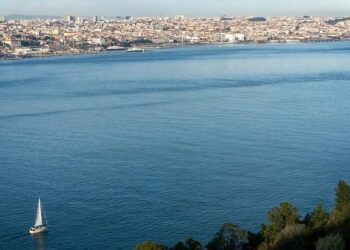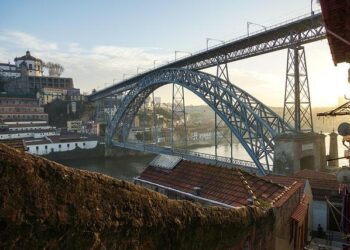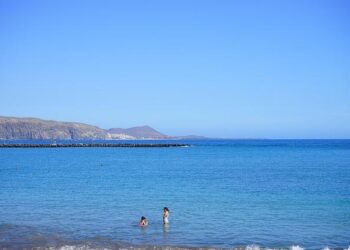Lisbon’s iconic calçadas-pavement mosaics known for their intricate patterns-are more than just decorative sidewalks. Recently, attention has turned to the distinctive green and red calçadas that line certain streets, prompting curiosity among residents and visitors alike. In this article, we explore the origins, significance, and growing popularity of these colorful pathways, revealing how Portugal’s tradition of mosaic pavement continues to evolve in contemporary urban landscapes.
Understanding the Significance of Green and Red Calçadas in Portuguese Streets
In many Portuguese cities, the colors of calçadas (paved sidewalks) are more than just aesthetic choices-they tell stories steeped in cultural and historical significance. The green calçadas often indicate areas of natural beauty or public parks, inviting pedestrians to enjoy serene strolls shaded by trees and vibrant flora. These pathways serve as subtle cues for residents and tourists alike to connect with nature, offering a restorative respite in the urban landscape. Furthermore, green calçadas are sometimes preserved around heritage sites to maintain harmony between the built environment and natural surroundings.
Conversely, red calçadas commonly highlight busy commercial zones or historical main streets bustling with energy. Their vivid color not only grabs the attention of passersby but also functions as a practical guide, signaling zones where caution is advised due to increased foot traffic and vehicular intersections. This use of color coding enhances urban navigation and safety, supporting the rhythm of daily life in Portugal’s diverse cities. Below is a quick reference table illustrating the typical uses of green and red calçadas:
| Calçada Color | Common Usage | Symbolic Meaning |
|---|---|---|
| Green | Parks, Natural Areas | Peace, Nature, Preservation |
| Red | Commercial Streets, Main Thoroughfares | Energy, Activity, Caution |
- Green calçadas: Encourage leisurely walking and appreciation of natural surroundings.
- Red calçadas: Alert pedestrians to high-activity zones requiring attention.
- Both colors form part of Portugal’s rich urban tapestry, blending function with cultural expression.
How These Color-Coded Pavements Enhance Urban Navigation and Safety
Urban planners in Portugal have adopted color-coded pavements as an innovative approach to streamline pedestrian movement and bolster safety across busy cityscapes. The green and red calçadas serve as visual cues, guiding individuals toward designated pathways and alerting them to potential hazards or restricted zones. By clearly marking these routes, cities foster a smoother flow of foot traffic while minimizing the risks of accidents, particularly at intersections and near vehicular lanes.
Beyond simple guidance, these pavements contribute to improved accessibility for diverse groups including tourists, locals, and individuals with mobility challenges. Key benefits include:
- Enhanced visibility: The contrasting colors are easily distinguishable in various weather conditions and lighting.
- Wayfinding efficiency: Pedestrians can intuitively follow paths without confusion, reducing congestion.
- Safety reinforcement: Red zones typically indicate no-go areas or caution, alerting users to stop or proceed carefully.
| Color | Purpose | Common Locations |
|---|---|---|
| Green | Safe pedestrian walkway | Crosswalks, parks, promenades |
| Red | Warning or restricted zone | Bus stops, intersections, construction areas |
Practical Tips for Tourists on Identifying and Using the Calçadas Correctly
When navigating Portugal’s charming streets, understanding the color-coded calçadas can greatly enhance your experience and ensure pedestrian safety. The green calçadas are designed as pedestrian-friendly paths, often marked with symbols or textured stones to guide foot traffic. Tourists should prioritize walking on these to avoid unintentional encounters with cyclists or vehicles. Conversely, red calçadas typically indicate zones shared with cyclists or serve as cautionary stretches where extra alertness is needed. Keep an eye out for signage that complements these colors, as they often provide important instructions or warnings.
To make the most of your walk, consider these practical tips:
- Observe local behaviors: Watch how locals use the calçadas-this can be a reliable clue to correct usage.
- Keep to the right: On narrower green calçadas, stay right to allow smoother two-way foot traffic.
- Be cautious at intersections: Red calçadas often signal upcoming crossings or bike lanes-reduce distractions here.
- Avoid blocking paths: Especially on green calçadas, don’t stop abruptly or congest the walkway, respecting flow and fellow pedestrians.
| Calçada Color | Primary Use | Tourist Tip |
|---|---|---|
| Green | Pedestrian path | Walk confidently, stay right |
| Red | Shared zone / caution | Stay alert, watch for bikes |
Final Thoughts
As Portugal continues to embrace sustainable urban development, the distinctive green and red calçadas serve as more than just colorful pathways-they are symbols of cultural heritage and environmental awareness. Following these vibrant trails offers residents and visitors alike a unique way to experience the country’s commitment to blending tradition with modern ecological practices. Whether navigating historic neighborhoods or exploring new cityscapes, the green and red calçadas invite everyone to walk thoughtfully and appreciate the stories embedded beneath their feet.
















